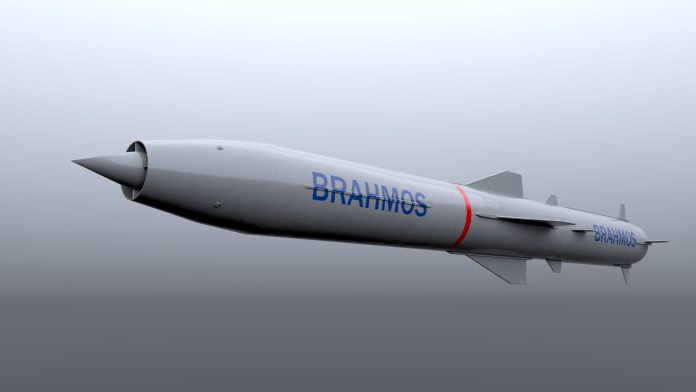India’s BrahMos missile is a milestone in new age technology and an icon of Indo-Russian defense cooperation Introduced through a joint collaboration between India’s Defense Research and Development Organisation and Russia’s NPO Mashinostroyenia in 1998, the name of the missile Brahmos is derived from the names of rivers Brahmaputra (India) and Moskva (Russia). It represents the integration of both countries technological strengths.
Land-launched and ship- launched Brahmos entered service in November 2005. Subsequently, an air-launched version was completed for the Su-30MKI fighter, which emerged in 2012 and became officially operational in 2019. The BrahMos is derived from the Russian P-800 Oniks cruise missile but has been indigenously upgraded and adapted to Indian Armed Forces specifications. It is the fastest supersonic cruise missile in active service worldwide, with the ability to cruise at speeds of Mach 2.8 to 3.0. Its speed makes it nearly impossible to detect and intercept, providing it with a decisive advantage over ordinary subsonic missiles.
Design:
Technically, Brahmos is a two-stage missile. Its first stage is a solid-fuel booster that takes it to supersonic speed, and the second stage is a liquid-fueled ramjet engine that maintains its cruise speed. The missile is stealth-designed to reduce radar detection and has the capability of low-altitude flying, particularly in sea-skimming mode. It adheres to a fire and forget policy with no further instructions after being fired, and it employs sophisticated inertial navigation supplemented with GPS/GLONASS technology for accuracies within a circular error probable (CEP) of less than a meter.
BrahMos has the capability to carry conventional warheads ranging from 200 to 300 kilograms and has a maximum range of 450 kilometers, with an extended-range division that can fly more than 800 kilometers under development. BrahMos is deployable from land-based platforms, submarines, surface ships, and fighter jets like Sukhoi Su-30MKI.
Variants:
A number of variants have been created to be compatible with various divisions of the military. These include Brahmos-A to be launched from air, BrahMos-ER for longer-range strikes and the BrahMos-NG (Next Generation) lighter and small variant being developed to be used by lighter planes and smaller launch platforms. A next-generation hypersonic version, BrahMos -II, is also on the cards, which plans to travel faster than Mach7.
Features:
Type: Supersonic cruise missile
Speed: Mach 2.8 to Mach 3.0 ( approximate 3,700 km/h)
Range: Up to 450 Km (Extended Range variant over 800 km)
Length: Approximately 8.4 meters
Diameter: Around 0.67 meters
Propulsion: Two stage-solid fuel booster and liquid-fueled ramjet
Launch Platforms: Land launchers, ships, submarines, aircraft
Guidance system: Inertial navigation system with GPS/GLONASS support
Conclusion:
In the recent India-Pakistan conflict, BrahMos missile was instrumental in the military campaign of India under ‘Operation Sindoor’. The Indian Defence Forces employed BrahMos missiles to carry out targeted attacks, having a deep impact on Pakistan’s defence setup.
India utilized BrahMos missiles along with other precision-guided weaponry such as HAMMER and SCALP missiles. BrahMos’s high speed (Mach 2.8- 3.0), precision accuracy, and fire and forget nature enabled India to target deep, the extended range (up to 800 km) of the missile granted strategic deterrence. The BrahMos missile is a symbol of India’s technological drive and strategic independence.








